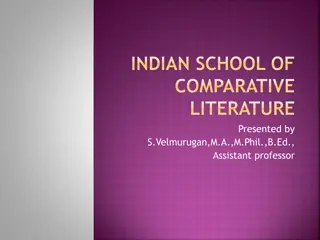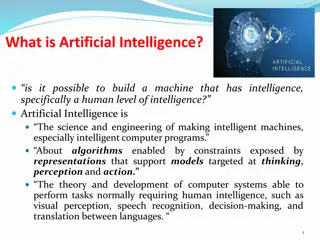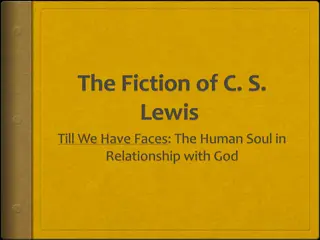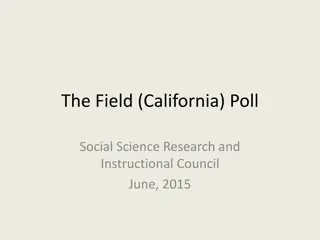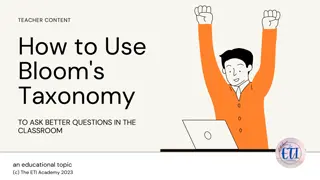Scheme of Arrangement under the Companies Act, 1956
The changes introduced in the existing procedures for stock exchanges and listed companies regarding the scheme of arrangement under the Companies Act, 1956. It covers the submission of draft schemes, display on websites, changes in internal procedures, court process, approval of shareholders, and i
4 views • 16 slides
Evolution of Software Engineering in the Era of Artificial Intelligence
Software engineering, founded as an academic discipline in 1968, and artificial intelligence, established in 1956, are key fields in computer science. Software engineering focuses on human cooperation to develop software, while AI involves the study and creation of intelligent machines. The intersec
0 views • 13 slides
Insights into the Indian School of Comparative Literature: A Comprehensive Overview
The Indian School of Comparative Literature, pioneered by Dr. Buddhadeva Bose in 1956 at Jadavpur University, plays a crucial role in studying the diverse languages and rich literary traditions of India. This academic discipline has grown significantly, with a focus on French symbolist poetry's infl
4 views • 14 slides
Artificial Intelligence: Building Intelligent Machines
Artificial Intelligence (AI) is the science and engineering behind creating intelligent machines that can think, perceive, and act like humans. It involves machine learning technologies, algorithms, and models that enable computers to perform tasks requiring human intelligence. AI encompasses a mult
1 views • 28 slides
Adoption under Hindu Law
Adoption under Hindu Law holds significant importance, with various types of sons recognized historically. Modern Hindu law focuses on legitimate adoption, defining adoption as the transplantation of a son to another family with legal rights and duties. The Hindu Adoption and Maintenance Act, 1956,
0 views • 16 slides
Contributory Negligence in Legal Context
Contributory Negligence (CN) refers to negligence that materially contributes to an injury, not just a breach of duty. It involves a person failing to take reasonable care of themselves, leading to their own injury. Legal cases like Ong Ah Long v Dr. S. Underwood [1983] and Kek Kee Leng v Teresa Bon
0 views • 15 slides
Joint Family Property vs Ancestral Property in Hindu Succession Law
Explore the distinctions between joint family property and ancestral property in the context of Hindu succession law. Learn about common mistakes related to inherited immovable and movable properties, and the implications of receiving property from a lineal ascendant in an HUF. Delve into the defini
0 views • 15 slides
Rights of an Auditor According to Section 1956
A company auditor holds specific rights under section 1956, including access to books of accounts, obtaining necessary information from directors/officers, correcting statements, visiting branch offices, and signing audit reports. These rights empower the auditor to fulfill their duties effectively
1 views • 8 slides
Revitalization Movements by A.F.C. Wallace
Explore the concept of revitalization movements as explained by A.F.C. Wallace in his paper published in 1956. The theory delves into deliberate efforts by groups to create new cultures, drawing examples from historical and contemporary contexts. Discover the various theories surrounding revitalizat
0 views • 14 slides
The Hindu Succession Act of 1956
The Hindu Succession Act of 1956 establishes a comprehensive system of laws governing the succession and inheritance of property for Hindus, Buddhists, Sikhs, and Jains in India. It covers both intestate and testamentary succession, outlining rules for agnates, cognates, heirs, and different types o
0 views • 10 slides
Overview of India's Five-Year Plans from 1951 to 1997
India implemented a series of Five-Year Plans from 1951 to 1997 with varying degrees of success. The First Plan (1951-56) focused on agriculture and industrialization, while the Second Plan (1956-61) aimed for economic growth but faced challenges due to external events like wars and droughts. Subseq
4 views • 6 slides
A Brief History of Artificial Intelligence
The history of artificial intelligence (AI) dates back to 1943 when McCulloch and Pitts proposed a model of artificial neurons. Over the years, there have been significant milestones such as the development of the first neural network computer by Minsky and Edmonds in 1956. The Dartmouth Conference
1 views • 9 slides
Significant Events of the Modern Civil Rights Movement
The Modern Civil Rights Movement in the 1950s and 1960s was marked by pivotal events that challenged segregation and discrimination in the United States. Key moments such as the Brown v. Board of Education ruling in 1954, the tragic murder of Emmett Till in 1955, Rosa Parks' defiant act sparking the
0 views • 17 slides
Khushwant Singh: Life and Works - Train to Pakistan Novel Summary
Khushwant Singh, a renowned writer and columnist, was born in 1915 in Haladi (now in Pakistan) and educated in Delhi and Lahore. He authored several books, including "Train to Pakistan," a novel on the partition. The novel, published in 1956, depicts the impact of the partition on Mano Majra, a fict
1 views • 33 slides
The Early Years of the People's Republic: 1949-1956 Through Images
Images and descriptions highlight the optimism, determination, and societal changes in the early years of the People's Republic of China (1949-1956), including campaigns against corruption, land reform, asset confiscation policies, and the First Five-Year Plan.
0 views • 31 slides
Post-WWII America: Economic Prosperity and Technological Advancements
In the post-World War II era, the United States experienced economic success driven by factors like government spending, the growth of suburbs, the rise of consumer demand from Baby Boomers, and advancements in industries like housing and oil. The period also saw significant scientific and technolog
0 views • 13 slides
Insights into the Eisenhower Era and Dynamic Conservatism
The content delves into key events during the Eisenhower era, including the Election of 1952, Nixon's Checkers Speech, Eisenhower's dynamic conservatism, the Federal Highway Act of 1956, and the impact of the highway system on American culture. It highlights Eisenhower's leadership style, the changi
4 views • 31 slides
The Impact of Civil Rights Movement and President Eisenhower's Legacy
Explore the significant events like the Civil Rights Movement, the popular presidency of Dwight D. Eisenhower, the Federal Aid Highway Act of 1956, the Baby Boom Years, and the advent of television in the lives of Americans during the mid-20th century. Learn about civil rights, segregation, the Brow
3 views • 24 slides
Myth and Philosophy in Till We Have Faces (1956)
Unveil the journey of Orual through suffering, self-realization, and philosophical introspection in C.S. Lewis's work, Till We Have Faces. Delve deep into themes of love, vulnerability, divine intervention, and the pursuit of wisdom as Orual grapples with her own identity and confronts the gods. Thr
2 views • 17 slides
Hungarian Revolution of 1956: Impact on the Cold War
The Hungarian Revolution of 1956 marked a significant episode in the Cold War era, challenging Soviet dominance and leading to widespread consequences. The uprising, led by Imre Nagy, faced brutal Soviet suppression, resulting in thousands of casualties and reinforcing Soviet control over Hungary. T
1 views • 10 slides
The Vietnam War: A Brief History
Explore the key events of The Vietnam War from the creation of French Indo-China to the cancelled election in 1956, shedding light on the Geneva Accords, the Domino Theory, and South Vietnam's political landscape.
0 views • 44 slides
Comprehensive Overview of PhD Programme in Computer Science at HKBU
Established in 1956, HKBU's PhD Programme in Computer Science is renowned for its distinguished faculty, high-tech facilities, and research excellence. With a focus on cutting-edge technologies like Big Data and GPU clusters, the program offers a unique opportunity for students to engage in world-le
0 views • 11 slides
The Field Poll and Accessing Data Through CSU Campuses
The Field Poll, established in 1947 by Mervin Field, is an independent survey of California public opinion. CSU campuses subscribe to social science databases, granting access to Field Poll data. Access is IP authenticated, requiring access from CSU campuses. The UCDATA website allows users to searc
0 views • 43 slides
The Hungarian Uprising of 1956: Consequences and Reforms
The Hungarian Uprising of 1956 was a pivotal event in Hungary's history, marked by protests against Soviet oppression and the leadership of Matyas Rakosi. Khrushchev's decision to replace Rakosi with Imre Nagy reflected a shift in Communist leadership. The demands for free speech and withdrawal of S
2 views • 15 slides
Overview of Corporate Legislation in India for Societal Welfare
The Government of India has enacted various legislations to safeguard societal interests and ensure the benefits of industrialization are enjoyed by all. Corporate entities adhere to these laws for societal well-being, with key acts such as the Companies Act, 1956, and the Securities and Exchange Bo
0 views • 15 slides
Evolution and Significance of Collective Bargaining in Industrial Relations
The term "collective bargaining" was coined in 1891 by Mrs. Beatrice Webb to represent workers' efforts to secure better wages and benefits collectively. The concept gained legal recognition in 1956 to formalize agreements between employers and workers. Collective bargaining resolves disputes and ev
0 views • 6 slides
Annual General Meetings in Company Law
An Annual General Meeting (AGM) is a significant yearly gathering of a company's shareholders where directors present financial reports and shareholders vote on key matters. This article discusses the importance, requirements, procedures, and penalties associated with AGMs in company law, comparing
0 views • 28 slides
Bloom's Taxonomy of Learning Domains
Bloom's Taxonomy, developed in 1956, focuses on promoting higher-order thinking in education. It categorizes learning into three domains: Cognitive (knowledge), Psychomotor (manual skills), and Affective (attitude). While Bloom's committee initially omitted the Psychomotor domain due to teaching lim
0 views • 19 slides
Enhancing Classroom Questioning Using Bloom's Taxonomy
Bloom's Taxonomy, developed by Benjamin Bloom in 1956, offers a framework for educators to set educational goals and assess students' understanding. This taxonomy consists of different levels - Remember, Understand, and Apply - guiding teachers to ask questions that promote critical thinking and dee
0 views • 11 slides
Exploring Washington Group Data from 2011 NHIS Survey
In this presentation, Julie D. Weeks, Ph.D., explores Washington Group data from the 2011 U.S. National Health Interview Survey. The presentation covers an overview of NHIS survey characteristics, examination of disability prevalence using the WG-SS and a broad definition, coding choices, cut points
0 views • 21 slides
Deep Dive into Nikita Khrushchev's Reforms and Removal from Power
Explore the transformative reforms and eventual downfall of Nikita Khrushchev during his tenure from 1956-1964. Delve into topics like Cold War dynamics, agricultural reforms, de-Stalinization, control of Eastern Europe, and reasons for his removal from power. Uncover the debates surrounding the ext
0 views • 7 slides


